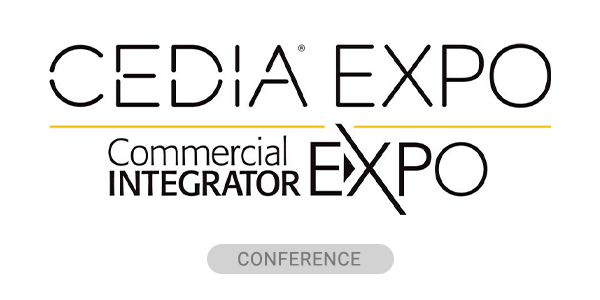Systems integrators have never been immune to shifting laws, regulations and standards. They have always changed in response to political priorities, economic pressures and technological advances. If it seems like the pace of change has accelerated in recent years, you aren’t wrong.
New legislative and regulatory challenges are surfacing often, and these changes could directly affect how you run your business — everything from inflating project costs and scopes of work, to confusing labor classifications, to elevating business risk.
NSCA, Commercial Integrator and Security Sales & Integration recently gathered industry and policy experts to explore five of the most pressing issues that integrators should pay attention to at the state and federal levels. These developments are important not only because they affect how integrators operate but also because they could influence whether certain types of work will remain viable.
What follows are the big takeaways from that webinar, which you can watch on-demand.
Right to Repair Legislation: Unintended Consequences
Consumer frustration with their inability to replace a smartphone battery or repair a device on their own, without an authorized dealer, was the catalyst for right-to-repair laws. But this legislation brings unintended consequences to commercial integrators.
Without carve-outs and protections that exclude certain technology, broad laws could encourage untrained personnel to attempt repairs on life-safety systems or mission-critical equipment like fire alarms, nurse call solutions or airport paging systems. If these repairs are not done correctly, they could endanger lives and expose integrators to liabilities.
Fortunately, NSCA and several industry partners have worked aggressively to secure these necessary carve-outs. They emphasize that only trained, factory-certified professionals should perform specialized work.
Even with these carve-outs, however, threats persist. Certain states, such as Oregon, continue to advance their own versions of right-to-repair laws that don’t recognize these nuances. Ignoring these bills or assuming that they don’t (or won’t) apply to you could create safety and business-continuity risks. Ongoing vigilance is essential.
Prevailing-Wage Legislation: A Moving Target
Intended to level the playing field between union and non-union firms, prevailing-wage laws, part of the federal Davis-Bacon Act, set wage standards for workers on government-funded projects. But these rules also introduce uncertainty for integrators.
The biggest is classification: Under which work category do integrators fall? In many states, integrators lack a clearly defined prevailing-wage category. This leaves them vulnerable to arbitrary designations, such as being lumped in with higher-wage classifications (electricians). This can make labor costs difficult to estimate and bid competitively.
We’ve also noticed the scope of prevailing wage beginning to creep. In certain states, for instance, it is being applied to offsite work (such as rack assembly performed before it is delivered to a site). Others are pushing to extend prevailing-wage definitions into long-term service contracts, which was not part of the law’s original intent.
Financial implications here are enormous. Imagine building racks in Tennessee for a project in New York, only to be told that the New York prevailing-wage rates apply retroactively. To avoid this, integrators must take proactive steps to confirm wage classifications before bidding.
Industry Classification Challenges: Labels Matter
NSCA has long monitored and weighed in on how integrators are defined across national construction standards, codes and insurance frameworks, as well as the impact of those definitions on business operations. For example, classification changes within CSI’s MasterFormat could lump integrators back in with electricians or IT contractors. This would erase the critical distinctions that the industry fought so hard to establish a few decades ago.
Clear industry classification influences things such as the following:
- Insurance rates
- Workers’ compensation categories
- How general contractors evaluate bids
- Eligibility for contracts
- Bonding requirements
As a result, misclassification can lead to higher costs, less favorable contract terms or exclusion from certain scopes of work.
The systems that integrators design and install require unique expertise. Codifying that is essential in frameworks like CSI’s MasterFormat to prevent dilution of the profession. Otherwise, integrators could lose their seat at the table as they work to protect their identity as a distinct, specialized and critical trade.
Limited Energy vs. High Voltage: The Turf Battle Goes On
If you’ve heard about any of these regulatory issues, it’s likely to be this one: the push by certain trade groups to redraw the line between low-voltage (limited-energy) work and high-voltage electrical work. They are pressing for tougher restrictions as they frame safe, proven technologies as “high-voltage tasks” that only electricians should perform.
A wide range of technologies handled by integrators every day is at stake, including the following:
- Power over Ethernet (PoE) deployment
- Fault-managed power (Class 4) systems
- Low-voltage LED lighting solutions
Integrators have been safely installing these technologies for decades. But proposed definitions could prevent them from continuing without expensive licensing changes or the need to subcontract to electricians.
Keep a close eye on how states draft these voltage definitions and make sure your teams are positioned as trained, competent and safe limited-energy operators.
Licensing and Credential Requirements: Proceed with Caution
The evolving maze of state licensing laws never stops shifting. Although most integrators accept that licensing rules vary by state, recent enforcement crackdowns and long approval timelines create new operational hurdles.
In Nevada and Hawaii, for example, integrators are discovering too late that licensing requirements include strict “brick and mortar,” in-state office mandates that make it nearly impossible for outside companies to complete projects profitably.
The absence of licensing reciprocity across most states adds another layer of inefficiency. For example, a national integrator might have to navigate between 10 and 20 licensing applications, each with its own timelines, exams and compliance rules. If you bid a job without aligning your credentials with these mandates upfront, it can result in delays, penalties or the inability to complete the work.
Study project specifications, confirm licensing obligations early by using NSCA’s Guide to State Licensing and avoid putting your business at risk by underestimating state-by-state differences.
The Business Imperative: Awareness and Advocacy
If you want to protect your company, it is crucial to stay informed and make sure your voice is part of the legislative conversation.
Our industry has a track record of coming together to shape legislation, secure carve-outs and course-correct when policymakers overlook the realities of the trade. But success depends on vigilance.
To get involved, reach out to us at NSCA.org/advocacy.
To watch the entire webinar, visit CommercialIntegrator.com/resources/5-legislative-regulatory-issues-that-could-negatively-impact-integrators-businesses/142372/.
Tom LeBlanc is executive director of NSCA.




